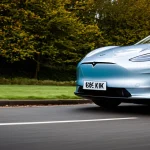Legislative measures to reduce vehicle emissions
In the UK, vehicle emissions regulations have become increasingly stringent under evolving UK automotive emissions laws designed to reduce environmental impact. Recent government regulations set clear emission standards for manufacturers and vehicles, targeting harmful pollutants such as nitrogen oxides (NOx) and particulate matter. These standards compel carmakers to adopt cleaner technologies and improve fuel efficiency.
Non-compliance with these regulations triggers enforcement actions. The government enforces penalties, including significant fines and potential restrictions on vehicle sales, ensuring manufacturers remain accountable. This robust framework incentivizes innovation while safeguarding air quality.
Have you seen this : Can Electric Cars Revolutionize the UK Automotive Industry?
The spectrum of regulatory measures covers both new vehicle certification and in-use emissions. The alignment of UK environmental policy with international standards has also reinforced these measures. Overall, these laws form a critical backbone for the UK’s ambitions to meet climate goals through tangible emissions reduction.
Technological innovations in the automotive industry
Technological innovation plays a pivotal role in the UK’s efforts to meet stringent vehicle emissions regulations. Foremost is the rapid adoption and advancement of electric vehicles UK, which have become central to reducing tailpipe emissions. Electric vehicles operate without producing direct emissions, thus aligning seamlessly with evolving UK automotive emissions laws focused on cutting pollutants. Their growing market share reflects both improved battery technologies and expanding charging infrastructure.
In the same genre : Future Innovations: How Will Self-Driving Cars Transform Our City Infrastructure?
In parallel, hybrid technology continues to advance, offering a transitional solution that combines traditional internal combustion engines with electric powertrains. This blend optimizes fuel efficiency and reduces emissions within the constraints of current UK environmental policy frameworks. Hybrid vehicles help manufacturers comply with emission standards while catering to consumer demand for low-emission alternatives.
Beyond propulsion, recent breakthroughs in emissions reduction technology include advanced exhaust treatment systems, such as selective catalytic reduction and particulate filters. These systems significantly lower harmful emissions from combustion engines, enabling better compliance with tighter vehicle emissions regulations. Together, such innovations create a multi-faceted technological response to the challenges posed by the UK’s ambitious environmental policy goals.
Government incentives supporting emissions reduction
Government incentives play a crucial role in accelerating the adoption of cleaner vehicles under UK environmental policy. The UK government incentives for EVs include substantial financial support schemes targeting both consumers and manufacturers. These programs typically offer grants for low-emission vehicles, which directly reduce the purchase price of electric and hybrid cars.
Key grants for low-emission vehicles include:
- Plug-in Car Grant (PICG), offering discounts on eligible electric vehicles.
- Support for home charging infrastructure, facilitating easier EV use.
- Subsidies for commercial electric fleets, encouraging industry uptake.
Tax breaks complement these grants by lowering ownership costs through reduced vehicle excise duty and congestion charges. Together, these measures make zero- and low-emission cars more financially attractive, thereby increasing market demand.
The impact of these incentives reflects positively on electric vehicles UK adoption rates. By easing upfront costs, consumers are more inclined to switch from conventional cars. Similarly, manufacturers receive motivation to prioritize low-emission vehicle production to qualify for government-backed benefits. This synergy between policy and market encourages sustained progress towards emissions reduction targets.
By continuously adjusting incentives in line with technological advancements and market dynamics, the UK maintains a practical framework that supports the transition to cleaner mobility while addressing economic and environmental objectives within its broader UK environmental policy.
Industry collaboration and commitments
Collaboration within the UK automotive industry partnerships plays a pivotal role in accelerating emissions reduction efforts. Leading automakers, technology companies, and government agencies have formed alliances to pool expertise and resources. These partnerships enable joint development of advanced emissions reduction technology, ensuring faster innovation cycles and cost efficiencies.
Industry pledges underscore a collective commitment to achieving stringent targets set by UK automotive emissions laws. For example, several manufacturers have publicly committed to phasing out internal combustion engines and increasing electric vehicle production significantly. These pledges align with the broader UK environmental policy goals, amplifying their impact through unified action.
Collaborative initiatives often focus on shared research, such as developing next-generation batteries or establishing common charging infrastructure standards for electric vehicles UK. By coordinating research and development efforts, participants can overcome technological hurdles more effectively, accelerating the transition to low-emission transport. This cooperation streamlines compliance with evolving regulations and supports the industry’s overall sustainability trajectory.









